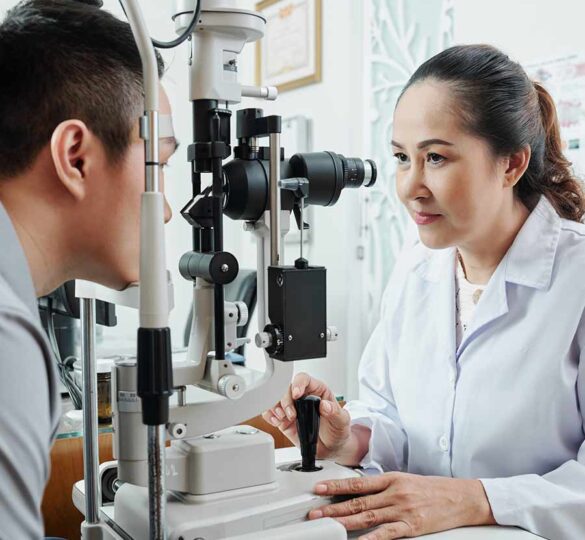Can Eye Pressure Become Too Low?
There is a lot of variability in what pressure an eye can tolerate. But how low is too low?

Can eye pressure become too low?
The average eye pressure for most individuals is between 10 and 21 mm HG (millimeters of mercury). When the eye pressure is consistently at 5 mm HG or below, that is generally considered to be a low eye pressure. There is a lot of variability in what pressure an eye can tolerate. Just as some eyes are more sensitive to high pressure, some eyes are more easily troubled by low pressures. So, rather than the pressure number, it is more important to know if the low pressure is causing problems with the eye structure or vision.
How does low eye pressure affect the eye?
When the eye pressure is lower than the eye can tolerate, the effect is like a ball that doesn’t have enough air and parts of the ball can fold or collapse. Low eye pressure is often associated with detachment of the choroid (the layer of the eye lying between the retina and sclera) and shallowing of the anterior chamber (the front inner part of the eye). Low eye pressure can also cause abnormalities in the retina, lens and cornea. All of these changes in the eye can lead to decreased vision.
What causes the eye pressure to become low?
Eye pressure can become too low from various causes including eye injury, chronic inflammation, retinal detachment, and eye surgery. When glaucoma surgery is performed to lower the eye pressure, it may sometimes lower the pressure too much. The risk of having low eye pressure after glaucoma surgery varies depending on the type of surgery and various patient factors.
How is low eye pressure treated?
Treatment depends on the underlying cause. Low eye pressure after glaucoma surgery is usually a temporary issue that resolves as the eye heals. If the low eye pressure is persistent and causing vision loss, then surgical treatment may be considered.
Article by Sunita Radhakrishnan, MD. Posted on April 5, 2024.

Sunita Radhakrishnan, MD
Sunita Radhakrishnan, MD specializes in the medical and surgical treatment of glaucoma at the Glaucoma Center of San Francisco and is co-Director of Research at the Glaucoma Research and Education Group in San Francisco.